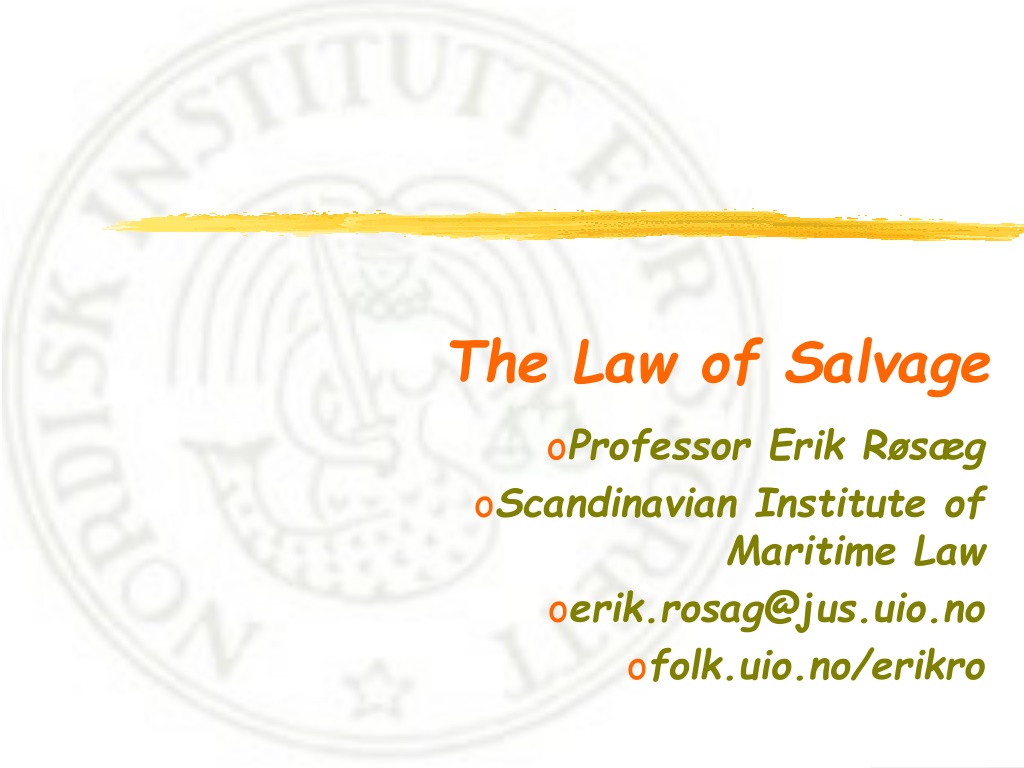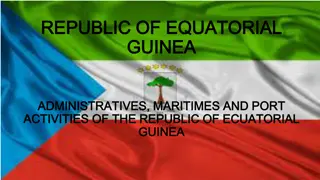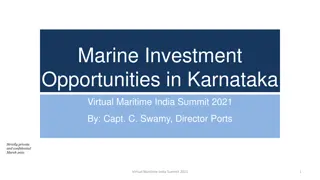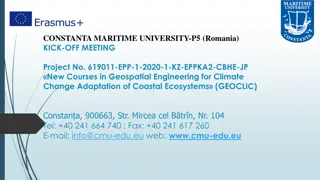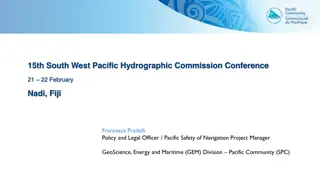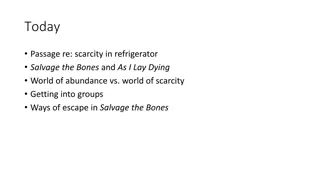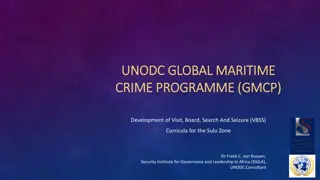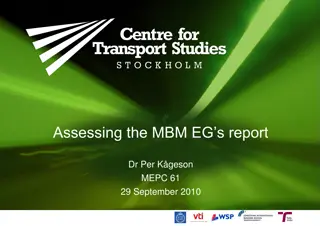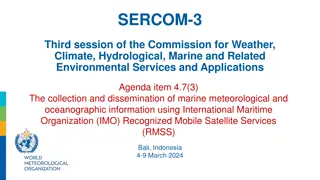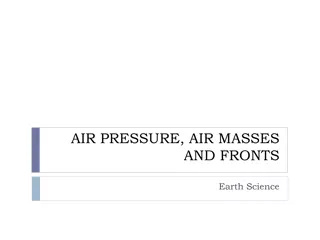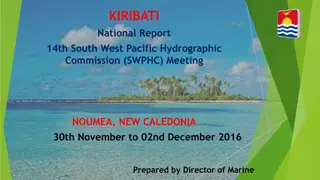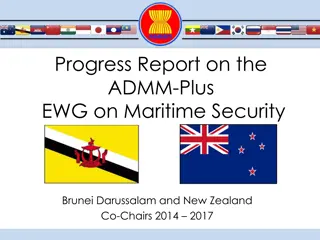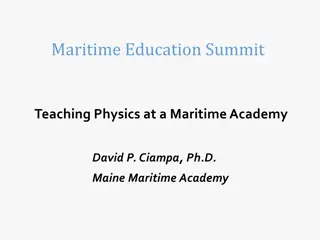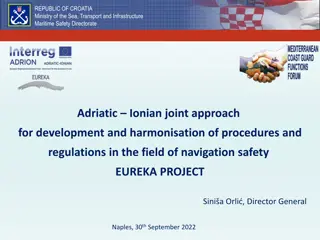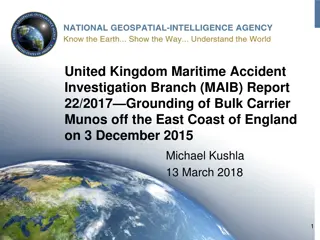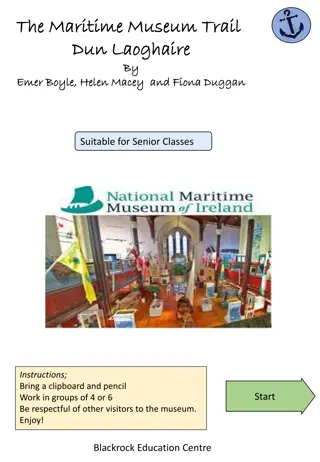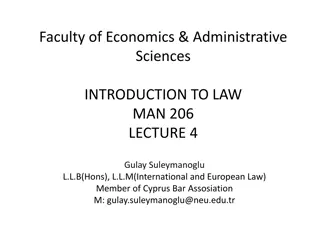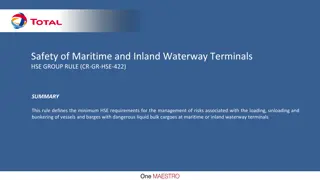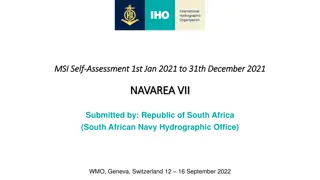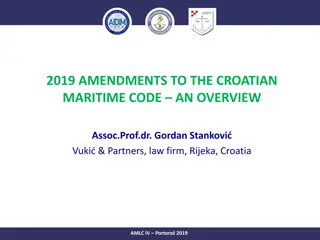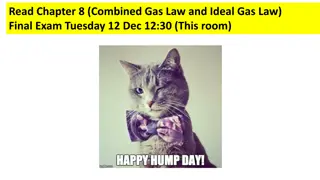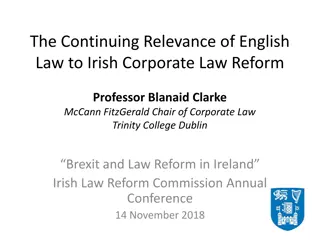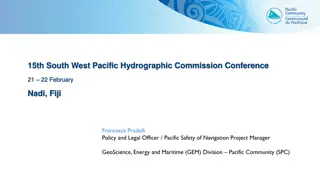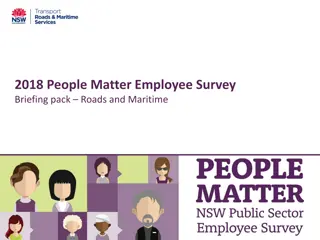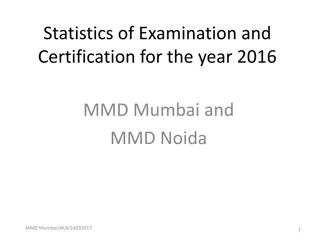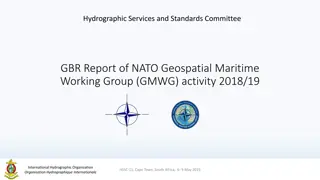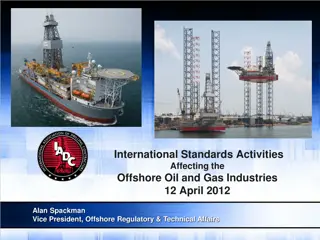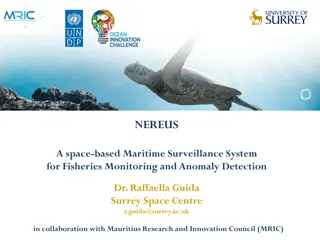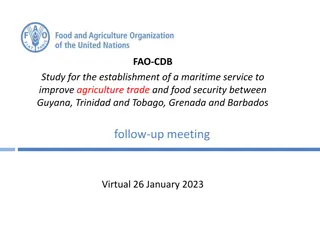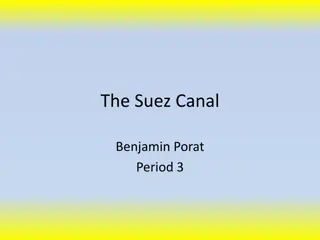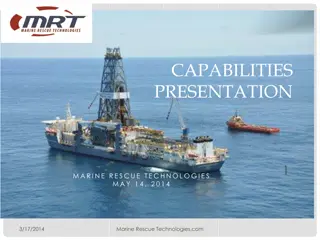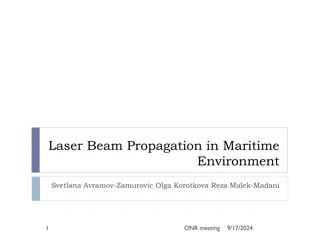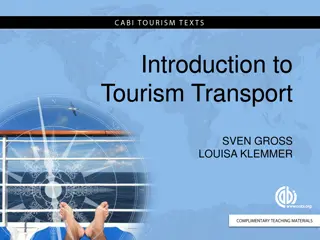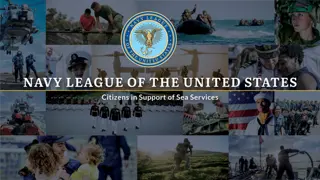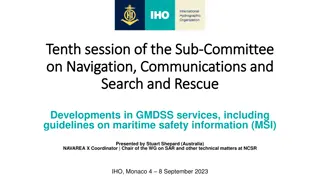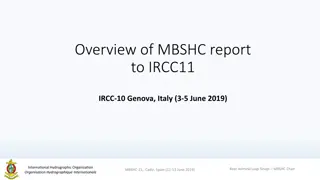Overview of Maritime Salvage Law and Operations
Salvage law encompasses acts to assist vessels or property in danger, with rewarding conditions based on success and voluntary efforts. Maritime salvage operations involve a range of services such as stranding assistance, rescue towage, and wreck removal, governed by international conventions and regulations.
Download Presentation

Please find below an Image/Link to download the presentation.
The content on the website is provided AS IS for your information and personal use only. It may not be sold, licensed, or shared on other websites without obtaining consent from the author. Download presentation by click this link. If you encounter any issues during the download, it is possible that the publisher has removed the file from their server.
E N D
Presentation Transcript
The Law of Salvage oProfessor Erik R s g oScandinavian Institute of Maritime Law oerik.rosag@jus.uio.no ofolk.uio.no/erikro
What salvage is about Any act or activity to assist a vessel, or any other property in danger, in navigabel waters, or in any other waters watsoever 2
Intended purposes oCounter plundering oIncentive oShip oPersons oEnvironment 3
This has influenced the rules on oThe reward oNo reward without success oAgreement not necessary 4
An overview of salvage o Interest or property subject to salvage o Conditions for reward o Danger o Voluntariness o Useful result oResult-based reward oNo cure - No pay o Salvage under contract 5
Quite unique to maritime law o Airplanes Act No. 101/1993 12-8 o Fishery equipment Act No. 37/2008 29 -- o Negotiorum gestio o Wreck act, 1893 o Lost property Act, 1955 o Pollution Act, 1981 6
The legal background o 1910 Brussels Convention for the Unification of Certain Rules with Respect to Assistance and Salvage at Sea o Amoco Cadiz o International Convention On Salvage 1989 o Lloyd s Open Form (LOF) 2000 7
Common salvage operations and services o Stranding and grounding o Sinking o Rescue towage o --- o Refloating o Pumping, raising and repair o Hook up and tow in o Surveys o Fire fighting o Cargo/equipment recovery o Wreck removal o Standing by o Prevention of third party damage 8
Interests subject to salvage, 441 oVessels oMobile drilling units, 507 oCargo oOther property o No Salvage alone of oPersons, 445(2) oLiability oLoss of time 9
In danger, foundered or wrecked, 441 o Foundered or wrecked o Types of danger o Total loss o Extensive damage o Assistance contrasted o Degree of danger o Severe peril of the sea o Actual danger as opposed to perceived danger o Loran ND 1996.238 o Los 102 ND 1999.269 o Norsk Viking ND 2004.383 10
Voluntariness, 450 oCoastguard oCrew oPilot oTug oOther public authorities 11
Masters veto, 450(2) o First come, first serve o Rationale for veto o Problem of delay o Duties of the involved, 444 12
Useful result, 445 oNo cure no pay-principle oReward cannot exceed the saved value oWhat is success? oOut of danger sufficient? 13
Assessment of the reward o Aim to encouraging salvage efforts o Criteria, 446 o Without regard to the order of the criteria o Reduction, 450 o PIOPIC 14
Damage to the environment treated outside the principle oSpecial compensation, 449 oUnsuccessful efforts: Expenses oSuccessful efforts: Expenses + 30 to 100 percent 15
Special compensation o The vessel must threaten to damage the environment o Damage means substantial physical damage to human health or to marine life or recourses o Causes only from certain pollutants 16
Problems o What constitute expenses? o Can profit be included? o How to measure success? o How to assess the uplift (+30- 100 %)? o Insurers exposed to unmonitored risks 17
The solution to the problems oSCOPIC-clause into the salvage contract oSpecial compensation scheme not applicable 18
SCOPIC-clause o Main advantages compared to art. 14 of the salvage convention o No threat of damage to the environment required o Geographical scope o A fixed uplift (25%) not linked to success o Agreed tariff rates for tugs personnel and equipment o Firm agreement on security o P&I clubs and property underwriters rights to be represented during the salvage operation 19
Salvage under contract o Agreement that there is a danger o Fixed rate o Pure salvage o No cure no pay o A salvage contract can be modified and annulled, 443 20
Towage contrasted oAgreed price oDaily hourly rate (BIMCO Towhire) oLump sum (BIMCO Towcon) oUsually no claim for salvage compensation 21
Special salvage operations 442(2) oSalvage operations by sister vessels oSalvage operations by public authorities 22
Apportionment o Apportionment between independent salvors, 448 o Apportionment between owner, master and crew, 451 o Apportionment between owner and time charterer, 386 and 392 o Risk distribution in carriage of goods, 275 and 278 23
General Average oAllowed in YAR 1994 Rule VI, cf. 447 oOutside YAR 2004 oSubsequent debate 24
MARINE Insurance oNMIP 4-8 oCICG 39 25
Maritime lien and limitation o Maritime lien, 51 and 61 o Limitation, 173 o IOPCF Claims Manual, 2007, #3.1.15 26
